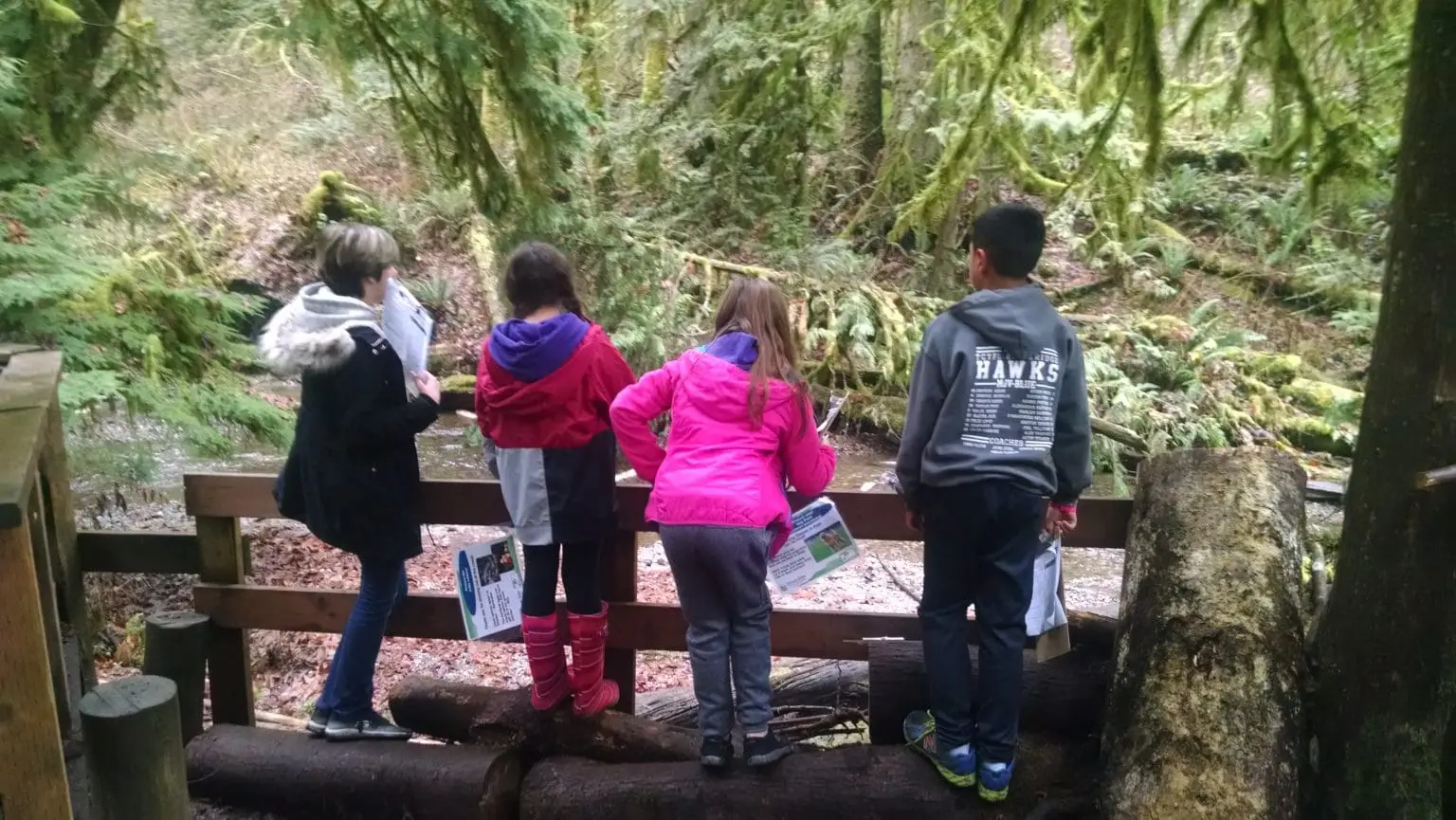
Where to See Salmon in Washington State
The Northwest’s identity cannot be defined without the salmon that have sustained people and their cultures since time immemorial. Whether enriching forests with oceanic nutrients, providing sustenance to wildlife and humans, creating a spiritual connection to the earth, inspiring youth, or supporting generations of fishers, salmon are a profound Northwest icon that defines our connection to place.
Salmon migrate thousands of miles across several ecosystems—from mountainous headwaters, down creeks and rivers, through estuaries, to the North Pacific Ocean, and back again. They have remarkable abilities to survive fresh and saltwater, and extraordinary navigational skills that lead them back to where they once came, ready to spawn their next generation.
In the Northwest, we have a fantastic opportunity to watch salmon as they complete their migration home. We’ve put together this list of salmon watching locations from organizations around Washington State, so you can see this epic migration in your own community. Don’t see your favorite public viewing spot here? Let us know so we can add it!
Viewing Locations
Across Washington State
Jefferson County
King County
- King County Salmon SEEson
- Ballard Locks Fish Ladder
- Bear and Cottage Creeks
- Carkeek Park
- Cedar River Salmon Viewing from the Seattle Aquarium
- Issaquah Salmon Hatchery
- Piper’s Creek
- Snoqualmie River: Chinook Bend
- Snoqualmie River: Tolt MacDonald Park
- Soos Creek (below the Green River Hatchery)
Kitsap County
- Kitsap Salmon Tours
- Chico Salmon Park
- Clear Creek Trail Ridgetop Pavilion
- Jarstad Park
- Keta Legacy Foundation Rhododendron Preserve
- Merle Hayes Salmon Enhancement Center
- Poulsbo’s Fish Park
- Salmon Haven at Dickerson Creek
Mason County
Pierce County
- Where and When To See Salmon
- Meet the Salmon in Your Neighborhood
- Crescent Creek
- Fennel Creek
- South Prairie Creek
- Voight Creek Hatchery
Skagit County
- Skagit Fisheries Enhancement Group Salmon Sightings Map
- Lyman Slough Conservation Area
- Friday Creek at Donovan Park
- Friday Creek at Pomona Grange Park
Thurston County
- 5th Avenue Bridge in Olympia
- Brewery Park at Tumwater Falls
- Kennedy Creek Nature Trail
- McLane Creek Nature Trail
- Tumwater Falls Hatchery
Whatcom County
Tips for Salmon Viewing
- Respect the salmon, the lands and waters, and the people who steward them, especially Indigenous peoples whose cultures have been deeply connected with salmon since time immemorial. The Northwest Indian Fisheries Commission and Columbia River Inter-Tribal Fish Commission are good resources to learn about the relationship between tribal people and salmon in the area you’re visiting. The Snoqualmie Tribe Ancestral Lands Movement shares ways to practice respectful recreation on ancestral Snoqualmie territory.
- Give salmon space and stay out of the stream. They are working hard and if you’re near the spawning grounds, the streambed may already contain redds (nests of salmon eggs). Walking in the water disturbs the fish and can kill the eggs. Learn how to spot a redd.
- Polarized sunglasses can make it easier to see fish in the water. Also consider bringing binoculars so you can see the salmon up close without disturbing them in the water.
- Learn about the different species and their behavior. The local organizations below have great resources. You can also find an identification guide from Washington Department of Fish & Wildlife here.
- Timing is everything when it comes to salmon. While fall is the peak season for seeing salmon in our rivers and streams, yearly environment changes may shift the exact timing of each salmon run. In general, Chinook and Sockeye are the first to arrive, around August or September, followed by Coho in October or November, and Chum in November or December. Most Pink salmon only come back on odd years and generally start returning in September.
- Bring the experience home by taking action. We have 10 ways you can help save salmon, from building a healthier environment, to contributing to science, to sharing your salmon love with your friends, family, and leaders.
P.S. Salmon viewing can be an at-home experience too! Watch salmon returning to the Issaquah Hatchery on their live feed here. And you can join our Hood Canal steelhead underwater any time at LLTK’s livestreaming Fish Camera!